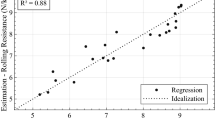Abstract
For all-season tire development a snow testing session is needed. Snow testing is possible and economically convenient only in a limited period and specific test centers. Therefore, tire development on snow is not achievable out of these boundary conditions. A prediction of snow performances during spring/summer/autumn testing actually is not feasible.
The aim of the study is to identify sets of all-season tire design parameters with same snow performances, rolling resistance and rolling noise but different performances on dry/wet surfaces, of brake, comfort and handling, free to be tuned based on the vehicle target attributes. Pattern geometry (PG), tread compound shore hardness (TSH) and glass transition temperature of tread compound (GTT) have been selected as tire design parameters.
To support the study, the Design for Six Sigma Methodology (DFSS) has been applied. DFSS is a structured approach to obtain the state of maximum robustness in product design. The optimization of the Ideal Function related to the Intended Function (lateral and longitudinal accelerations defined as Output Response, hereafter OR) of the component (tire) is obtained selecting proper Control Factors and Levels (hereafter C.F., which are PG, TSH and GTT) under systematic variation of Noise Factors (dry/wet/snow surfaces, hereafter N.F.) and Input Signals (car speed, hereafter IS). The result of DFSS approach, processed to objective evaluation, has been to identify the optimal combination (sets of all-season tire design parameters) of the above Control Factors and Levels to make the tire minimally sensitive to Noise Factors (dry/wet/snow surfaces) that causing variability in the output responses of component (tire performances).
In summary, the effects of PG, TSH, and GTT on the trade-off between snow performances, rolling resistance, rolling noise and driving dynamics have been identified.
Access this chapter
Tax calculation will be finalised at checkout
Purchases are for personal use only
Preview
Unable to display preview. Download preview PDF.
Similar content being viewed by others
References
Nakajima Y.: Advanced Tire Mechanics. Springer Singapore (2019).
Haney P.: The Racing & High-performance. SAE International Warrendale (2003).
Michelin: The tyre. Rolling resistance and fuel savings Société de Technologie Michelin (2003)
Author information
Authors and Affiliations
Corresponding author
Editor information
Editors and Affiliations
Rights and permissions
Copyright information
© 2021 Springer-Verlag GmbH Germany, part of Springer Nature
About this paper
Cite this paper
Martino, M., Danise, S. (2021). An optimized tire test method on snow. In: Pfeffer, P.E. (eds) 11th International Munich Chassis Symposium 2020. Proceedings. Springer Vieweg, Berlin, Heidelberg. https://doi.org/10.1007/978-3-662-63193-5_37
Download citation
DOI: https://doi.org/10.1007/978-3-662-63193-5_37
Published:
Publisher Name: Springer Vieweg, Berlin, Heidelberg
Print ISBN: 978-3-662-63192-8
Online ISBN: 978-3-662-63193-5
eBook Packages: EngineeringEngineering (R0)




